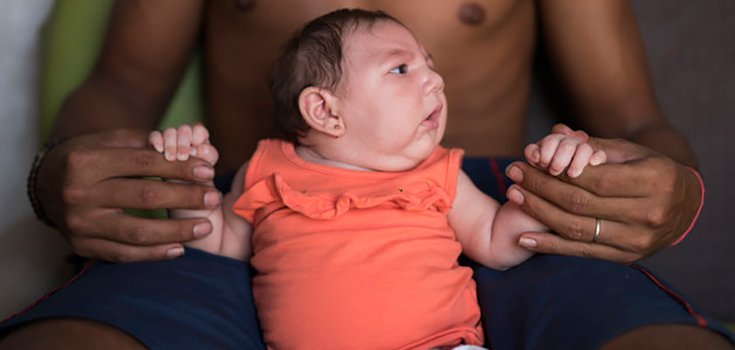Zika Virus Case Confirmed in Baby in Hawaii

The Zika virus is on the move, and it has arrived in the United States, with the first case of the illness being confirmed in a baby in Hawaii.
Little was known about the Zika virus in the U.S. until now because it generally causes mild symptoms including a fever, sometimes a rash, conjunctivitis and headache. In rare cases, it can cause the neurological disorder Guillain-Barre, which results in paralysis.
Government officials recently issued a travel advisory, however, because the virus is suspected of causing birth defects in thousands of babies in Brazil in recent months.
On Friday, the same day the U.S. Centers for Disease Control and Prevention (CDC) issued the travel advisory, the Hawaii State Department of Health said that a baby boy born in Oahu with microcephaly – an unusually small head and brain- had been infected with the Zika virus
The infected baby’s mother had lived in Brazil in May 2015 and was likely infected by a mosquito early on in her pregnancy, the CDC said.
It is believed that the virus reached the developing embryo and damaged its brain. [1]
“We are saddened by the events that have affected this mother and her newborn,” Dr. Sarah Park, Hawaii’s state epidemiologist, said in a statement. “This case further emphasizes the importance of the C.D.C. travel recommendations released today.” [2]
Women considering becoming pregnant were warned by the agency on Friday to speak with their doctor before traveling to areas affected by Zika. Those who chose to visit those countries were urged to take aggressive measures to avoid mosquito bites.
Dr. Park says there have been no confirmed reports of anyone contracting Zika within Hawaii. Health officials are aware of 6 individuals who had the virus in that state since 2014, but all of them contracted it elsewhere.
Scientists aren’t clear on how Zika damages fetal brains. It is related to the dengue, yellow fever and West Nile viruses, which typically don’t cause damage. Zika is not closely related to rubella or cytomegalovirus, which can both cause microcephaly.
It is also unknown whether the Zika virus alone causes microcephaly or if it occurs only if the mother had previously been infected with a different virus, such as dengue.
Hawaii is currently grappling with an outbreak of dengue fever, an infection which is spread by the same mosquitoes that spread the Zika virus. More than 200 cases have been reported between September 2015 and December 2015. Dengue is a leading cause of illness and death in the tropics and subtropics, according to the CDC. [3]
The primary symptoms of Dengue include high fever accompanied by severe headache, severe pain behind the eyes, joint pain, muscle and/or bone pain, rash, mild bleeding and low white cell count. The agency warns people to immediately go to an emergency room if they experience the following symptoms as their fever declines 3 to 7 days after symptoms begin:
- Severe abdominal pain or persistent vomiting
- Red spots or patches on the skin
- Bleeding from nose and gums
- Vomiting blood
- Black, tarry stools
- Drowsiness or irritability
- Pale, cold or clammy skin
- Difficulty breathing
Scientists are concerned about the pattern of dengue fever in Hawaii, as an epidemiologist with the CDC “recently predicted that Zika would follow the same pattern that dengue has, with local transmission during hot weather in tropical parts of the country, including Florida, the Gulf Coast and Hawaii,” The New York Times wrote. [1]
While dengue affects mainly tropical areas, a graphic provided by The Huffington Post shows dengue could reach as far north as Connecticut on the East Coast, and Washington in the west. [3]
In February 2014, civil society groups in one Brazilian town where GMO mosquitoes supposedly intended to stop the dengue virus were released declared an emergency decree after the virus actually began spreading even faster.
Sources:
[3] The Huffington Post (Featured image credit: ASSOCIATED PRESS)
